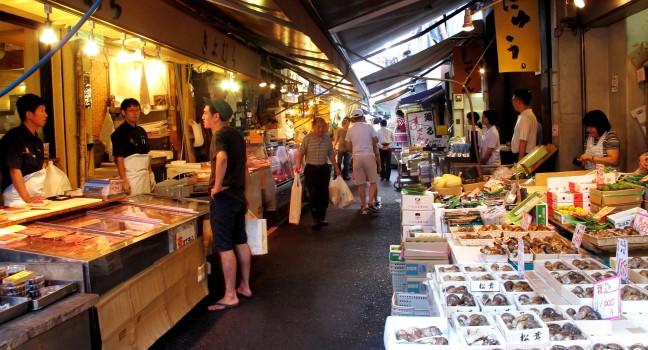Tsukiji Outer Market

Enjoying a sushi breakfast at this famous fish market is an integral part of any trip to Tokyo, even now that its famed inner market has been relocated to a nearby island in Tokyo Bay. If you have time for only one market, this is the one to see as the shopkeepers maintain the feeling of the original Tsukiji area. The three square blocks between the former site of Tokyo Central Wholesale Market and Harumi-dori have scores of fishmongers, plus shops and restaurants. Stores sell pickles, tea, crackers and snacks, cutlery (what better place to pick up a professional sushi knife?), baskets, and kitchenware. Hole-in-the-wall sushi bars here have set menus ranging from ¥1,000 to ¥2,500; look for the plastic models of food in glass cases out front. The area includes the row of little counter restaurants, barely more than street stalls, under the arcade along the east side of Shin-Ohashi-dori, each with its specialty. Come hungry and be sure to stop for maguro donburi—a bowl of fresh raw tuna slices served over rice and garnished with bits of dried seaweed.



